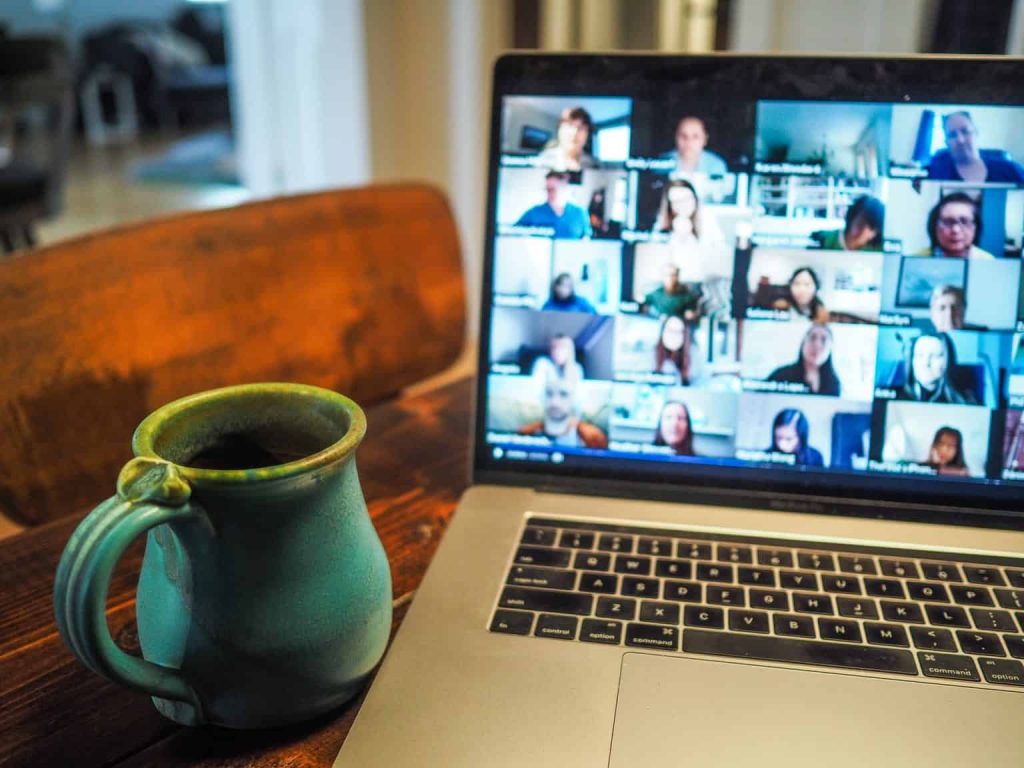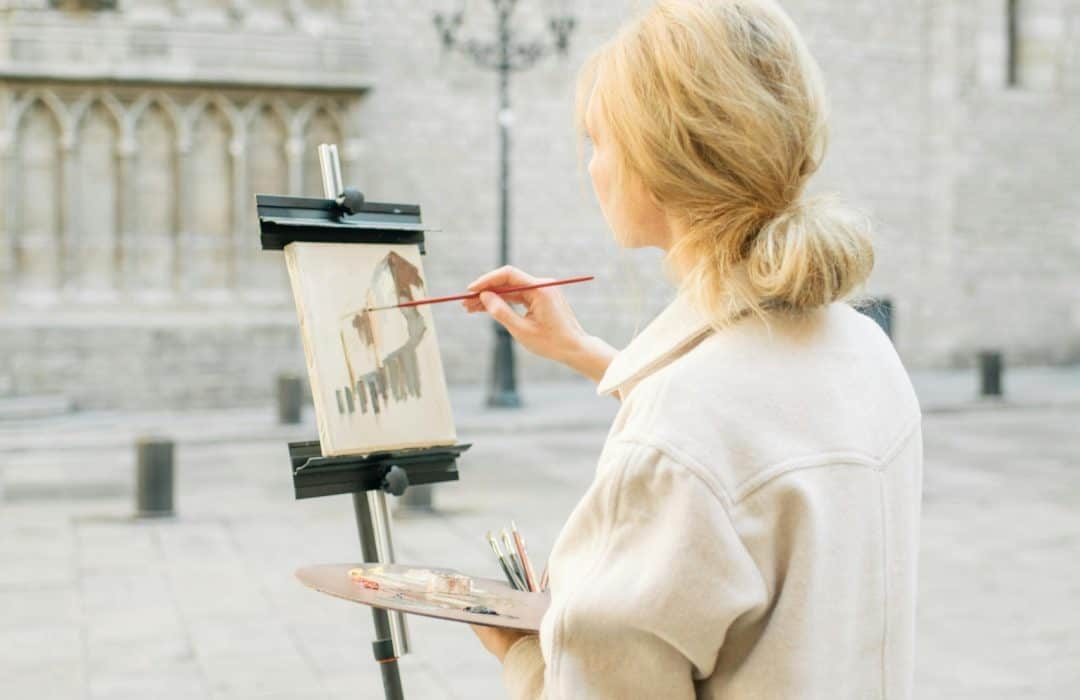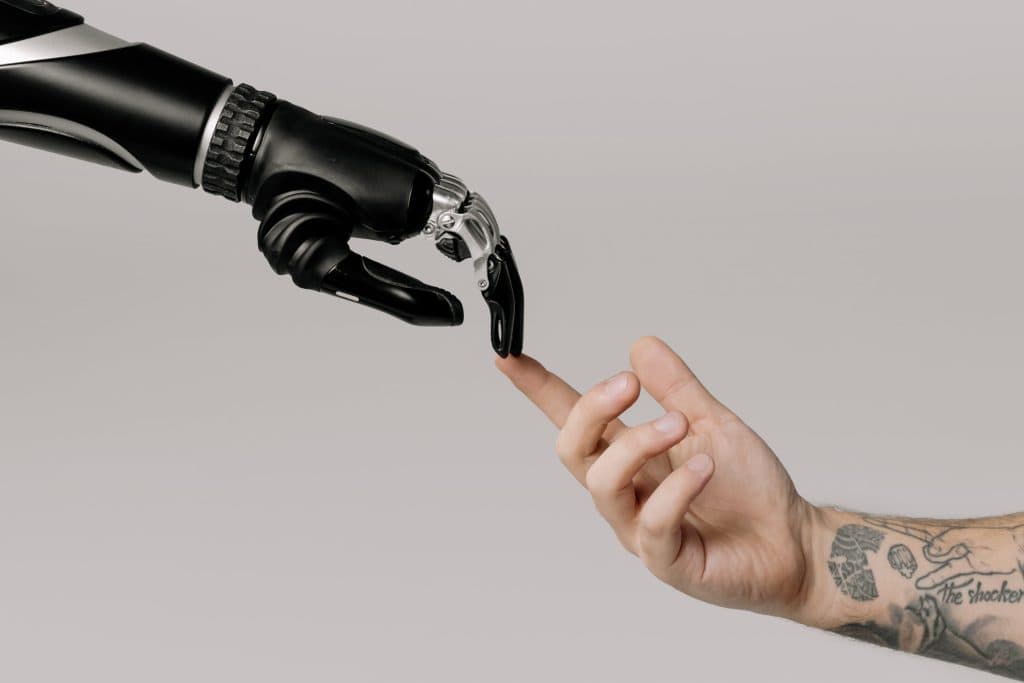
10 Feb Technological Advancements in Global Art Exchange
The global art exchange scene is undergoing a transformative shift, shedding traditional constraints that hindered the exchange of artistic expressions. Despite art’s historical role as a universal language connecting diverse cultures, challenges like physical limitations, accessibility issues, and communication barriers have impeded the seamless flow of creativity. Vast distances separating artists and enthusiasts, exclusive access to artworks, and linguistic or cultural obstacles have been persistent challenges.
In response, recent technological advancements, from virtual reality to collaborative online platforms, are reshaping the global art landscape. These innovations act as catalysts, breaking down barriers and democratizing access to art. The fusion of art and technology fosters unprecedented collaboration, enabling artists to transcend geographical boundaries and engage in cross-cultural dialogues. This evolution not only redefines how artists create and share their work but also amplifies their voices globally, marking a profound shift in the dynamics of the ever-expanding digital realm and promising boundless possibilities for a more interconnected, accessible, and vibrant global art ecosystem.
Technology as a Bridge: Breaking Down Barriers

Photo by Chris Montgomery
Communication and Collaboration
Online Platforms and Social Media
The impact of online platforms and social media on the art world has been nothing short of revolutionary. These digital spaces have eliminated geographical barriers, allowing artists to connect and collaborate on a global scale. In the past, such cross-border interactions were unimaginable, but now, artists leverage platforms like Instagram and X (formerly Twitter) as virtual canvases. These platforms enable artists to showcase their creations instantly, reaching a diverse and widespread audience. The democratization of visibility has empowered artists to gain recognition beyond traditional boundaries, fostering a more interconnected and dynamic art community.
Virtual Exhibitions and Real-time Collaboration
The integration of video conferencing and virtual exhibitions has significantly reshaped the landscape of art exchange. Artists and curators now engage in real-time collaboration, overcoming the limitations of physical distance. The emergence of virtual spaces, such as Zoom and VR exhibitions, has redefined the conventional art gallery concept. These platforms make art accessible to anyone with an internet connection, dismantling the barriers imposed by location or travel constraints. This shift not only broadens the audience but also provides a unique and immersive experience, enhancing the interaction between creators and art enthusiasts in the digital realm.
Online Communities and Knowledge Sharing
The rise of dedicated online art communities and forums has created thriving hubs for knowledge sharing and exchange. Artists now have the opportunity to engage in discussions about techniques, trends, and challenges, contributing to the formation of a robust global network of creatives. Platforms like DeviantArt and Reddit’s art communities play a pivotal role in building a supportive digital ecosystem. These spaces facilitate the sharing of experiences, insights, and constructive feedback, nurturing a sense of community among artists. The collaborative nature of these online communities fosters continuous learning and growth, breaking down traditional barriers to artistic development and creating an inclusive environment for artists of all levels.
Accessibility and Reach
Digital Archiving and Online Galleries
The advent of digital archiving and online galleries has ushered in a new era of accessibility in the art world. Museums and cultural institutions worldwide are actively digitizing their collections, making art available to a broader audience. This democratization of access ensures that people from various corners of the globe can explore and appreciate artworks without the constraints of physical proximity. Initiatives like Google Arts & Culture have taken this a step further by offering virtual tours of renowned art spaces. Users can now immerse themselves in the world of art, navigating through digital exhibitions and collections from the comfort of their own homes.
Virtual Reality and Augmented Reality Experiences
The integration of virtual reality (VR) and augmented reality (AR) technologies has revolutionized the way art is experienced. VR provides users with immersive journeys through virtual exhibitions, allowing them to navigate and explore art in three-dimensional spaces. On the other hand, AR transforms the physical world into an interactive canvas, offering unique and dynamic art experiences. These technologies break down geographical barriers, bringing art to remote audiences who can now engage with creative expressions as if they were physically present. The relationship between art and its audience has been redefined, offering novel and captivating ways for people to interact with artistic creations.
Cultural Diversity and Democratizing Art Appreciation
Tech-driven initiatives are increasingly focusing on promoting cultural diversity and democratizing art appreciation. Algorithms and personalized recommendations on platforms like Artsy expose users to a wide range of artistic styles, ensuring a global appreciation for diverse cultural expressions. By leveraging technology to curate and present artworks, these platforms provide a more inclusive representation of the art world, transcending traditional boundaries. This approach not only broadens the horizons of art enthusiasts but also fosters a deeper understanding and respect for the rich tapestry of global artistic heritage.
New Forms of Artistic Expression
Rise of Digital Art
The ascent of digital art, marked by the proliferation of non-fungible tokens (NFTs) and AI-generated creations, represents a paradigm shift in artistic expression. NFT platforms such as OpenSea and Rarible have emerged as revolutionary marketplaces, offering artists unprecedented opportunities to showcase and monetize their work. This phenomenon challenges conventional notions of ownership and value, as digital assets gain recognition and value in a blockchain-based economy. The rise of digital art not only transforms how art is perceived but also redefines the relationship between creators and their audience, ushering in a new era of decentralized and democratized art ownership.
Interactive Installations and Multimedia Projects
Technology has become a catalyst for artistic innovation, giving birth to interactive installations and multimedia projects that transcend traditional artistic boundaries. Artists leverage sensors, robotics, and other technological tools to craft immersive experiences that blur the lines between the artist and the audience. Interactive installations invite viewers to actively engage with the artwork, fostering a dynamic and participatory relationship. These projects redefine the spatial and sensory dimensions of artistic expression, creating environments where technology serves as a conduit for a more profound and interactive artistic experience. This fusion of art and technology not only challenges traditional artistic mediums but also expands the possibilities of audience engagement in the creative process.
Pushing Creative Boundaries
The continual innovation in technology serves as an empowering force for artists seeking to push their creative boundaries. From the utilization of 3D printing for sculptural masterpieces to the creation of AI-generated poetry, artists embrace technology as a medium for exploration and experimentation. This integration of technology into the artistic process enables the conception of works that were once inconceivable. Artists leverage new tools and techniques to challenge pre-existing norms, pushing the limits of what is possible in the art world. This ongoing interaction between technology and creativity not only broadens the artistic landscape but also fosters a culture of perpetual exploration and discovery, allowing artists to redefine their own artistic horizons.
Challenges and Considerations in the Tech-Driven Art World

Photo by Leeloo The First
Digital Accessibility and Equity
Despite the remarkable advancements in the digital realm, a critical challenge that persists is the issue of digital accessibility. Disparities exist across regions and demographics, creating barriers that hinder the full participation of artists and audiences in the tech-driven art exchange. Bridging these gaps is essential to ensure that the benefits of digital platforms, virtual exhibitions, and online communities are accessible to a diverse global audience. Efforts must be made to address issues of internet access, technological literacy, and economic inequalities, ensuring that the transformative power of technology in the art world reaches individuals from all walks of life.
Authenticity and Ownership in the Digital Space
The digital art space, particularly with the rise of non-fungible tokens (NFTs), brings forth concerns regarding authenticity and ownership. While NFTs offer new and exciting opportunities for artists to monetize their digital creations, questions arise about the true value and permanence of these digital assets. Issues such as copyright, intellectual property, and the potential for unauthorized duplication challenge the traditional notions of ownership and authenticity. As the art world grapples with these complexities, establishing clear frameworks and standards for digital ownership is essential to safeguard the rights of artists and maintain the integrity of their digital creations.
Preserving Cultural Heritage and Human Connection
The preservation of cultural heritage and the maintenance of human connection have become paramount considerations within the civilization of tech-driven world. While technology facilitates convenient access to art and cultural expressions, there is a need to strike a balance between the efficiency of digital platforms and the essence of art as a reflection of human experiences. Preserving cultural heritage involves leveraging technology for archiving and dissemination while ensuring that the authentic human connection to the artworks is not lost. Balancing the convenience of digital tools with the emotional and cultural depth that art embodies is crucial for creating a sustainable and meaningful art exchange that resonates with diverse audiences globally. This harmonious integration of technology and human connection ensures that the transformative power of art remains a shared and enriching experience for all.
The Future of Global Art Exchange: A Fusion of Technology and Humanity

Photo by cottonbro studio
Emerging Technologies
The exploration of emerging technologies, such as blockchain and artificial intelligence (AI), stands as a pivotal factor in shaping the future of global art exchange. These technologies have the potential to revolutionize various aspects of the art world, offering solutions that enhance security, transparency, and the overall experience for both artists and art enthusiasts. Blockchain, with its decentralized and secure nature, can be employed to establish provenance and authenticity in the art market, addressing concerns related to forgery and fraud. AI, on the other hand, opens avenues for creative collaboration and innovative expressions, contributing to the evolution of artistic practices. The strategic integration of these emerging technologies holds the key to unlocking new possibilities and efficiencies within the global art ecosystem.
Balancing Convenience and Human Interaction
As technology continues to evolve, finding a delicate balance between convenience and human interaction in virtual art experiences becomes paramount. Virtual spaces, including online galleries and digital exhibitions, should aim to enhance, not replace, the emotional connection that art creates between the artist and the audience. While technology offers the convenience of accessing art from anywhere in the world, efforts must be made to preserve the intimate and personal aspects of the artistic experience. Striking this balance ensures that technological advancements serve as facilitators, enriching the accessibility of art while preserving the profound connections forged through the shared appreciation of creativity and expression.
Cross-Cultural Understanding Through Art
The future of global art exchange hinges on the promotion of cross-cultural understanding and empathy. Technology should function as a tool for uniting people through creativity and innovation, fostering a global community that appreciates and respects diverse artistic expressions. As digital platforms facilitate the exchange of artworks across borders, they have the potential to transcend cultural barriers, allowing individuals to connect with art from various parts of the world. Through the lens of art, technology can become a catalyst for promoting understanding, sparking conversations, and building bridges between different cultures. By leveraging technology to create a shared space for artistic expression, the global art community can contribute to a more interconnected and culturally enriched world.

Photo by Vlada Karpovich
Conclusion
Technological advancements have ushered in a new era of global art exchange, revolutionizing the way artists connect and collaborate worldwide. These advancements have broken down physical limitations, increased accessibility, and fostered cross-cultural interactions, resulting in a vibrant and interconnected art world.
However, as we navigate this tech-driven landscape, we must address challenges such as digital accessibility disparities, concerns about authenticity and ownership, and the need to preserve cultural heritage and human connection. Striking a balance between the convenience of technology and the emotional connection that art creates is crucial for a sustainable and meaningful art exchange.
The future of global art exchange lies in embracing emerging technologies like blockchain and AI, enhancing cross-cultural understanding through art, and ensuring that technology serves as a tool for uniting people through creativity and innovation. By doing so, we can continue to bridge creativity across borders and foster a global community that appreciates and respects diverse artistic expressions.
Key Takeaways
- Technology has revolutionized global art exchange, overcoming physical limitations and fostering collaboration across borders.
- Virtual reality, augmented reality, and digital platforms have widened access to art, making it more inclusive and diverse.
- NFTs and blockchain-based platforms have reshaped the art market, offering new avenues for artists and collectors.
- Challenges include digital accessibility disparities, concerns about authenticity in the digital space, and the need to preserve cultural heritage.
- The future of global art exchange lies in a fusion of technology and humanity, balancing convenience with the preservation of human connection.
FAQs
How has technology impacted collaboration among artists globally?
Technology has significantly impacted collaboration among artists globally by facilitating real-time interaction and cooperation through various online platforms, social media, and virtual exhibitions. This transformation has effectively dismantled geographical barriers, allowing artists from different parts of the world to engage in creative processes, share ideas, and form a cohesive global artistic community. The ability to collaborate seamlessly across borders has not only expanded the diversity of artistic influences but has also opened up new avenues for cross-cultural exchange and innovation.
What challenges does the tech-driven art world face, and how can they be addressed?
The tech-driven art world faces several challenges that require careful consideration and proactive solutions. Digital accessibility disparities remain a significant concern, as not all artists or art enthusiasts may have equal access to technology. Additionally, there are ongoing concerns about the authenticity of digital art and the potential for plagiarism or unauthorized reproductions. Striking a balance between leveraging technological conveniences and preserving cultural heritage is crucial. Tackling these challenges necessitates a collaborative effort from the art community, technology developers, and policymakers to establish ethical standards, promote accessibility, and ensure the responsible use of technology in the art world.
How can emerging technologies like blockchain and AI shape the future of global art exchange?
Emerging technologies like blockchain and AI hold substantial promise in shaping the future of global art exchange. Blockchain can provide a secure and transparent system for managing art transactions, ensuring authenticity, and protecting artists’ intellectual property rights. AI, on the other hand, can enhance the overall art experience by offering personalized recommendations, automating administrative tasks, and even contributing to the creation of art itself. Together, these technologies have the potential to make the art market more efficient, inclusive, and trustworthy, benefiting both artists and collectors in the evolving landscape of the global art exchange.
Study the “Historical Art Movements and Their Societal Impact” where every painted surface and sculptured shape becomes a cultural mirror that reflects the ideals, philosophies, and zeitgeist of the time it was created.

